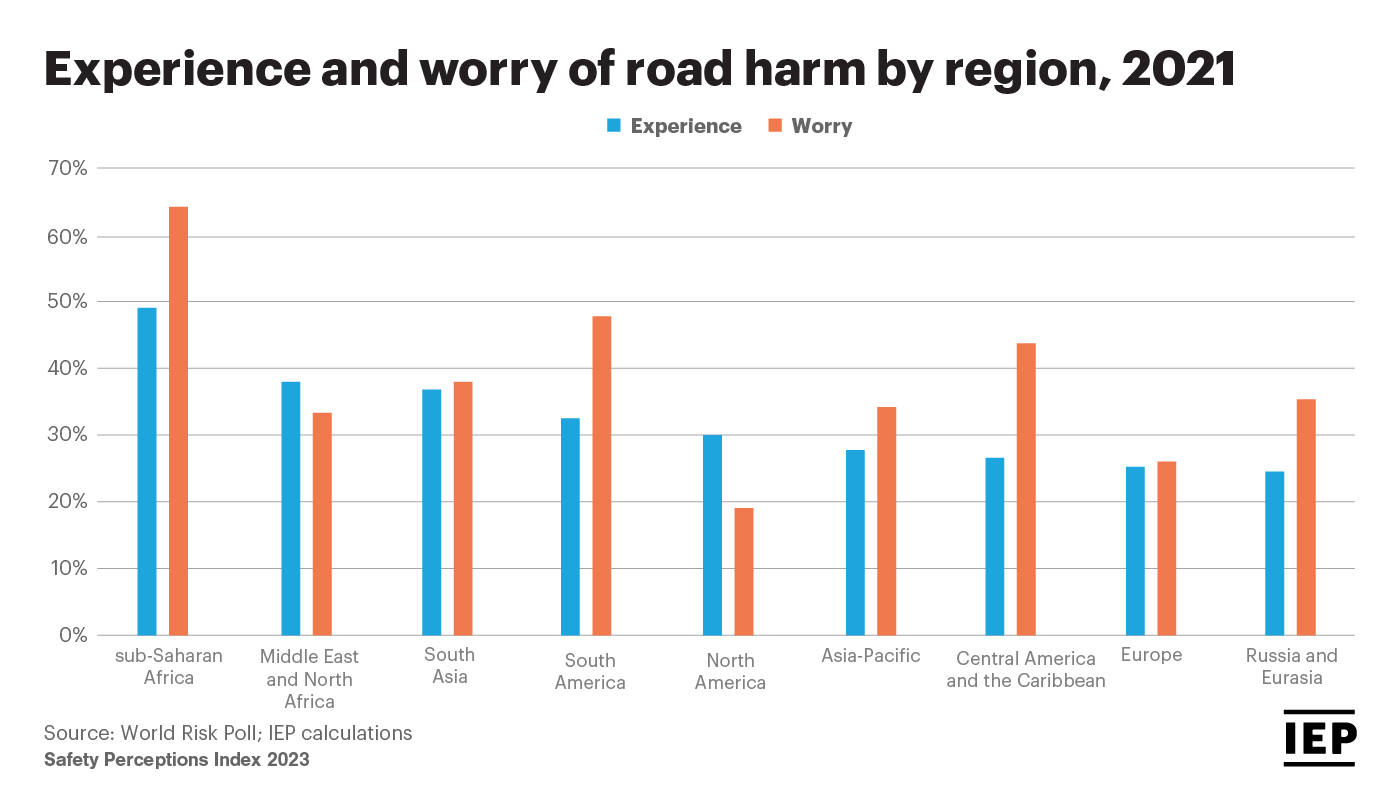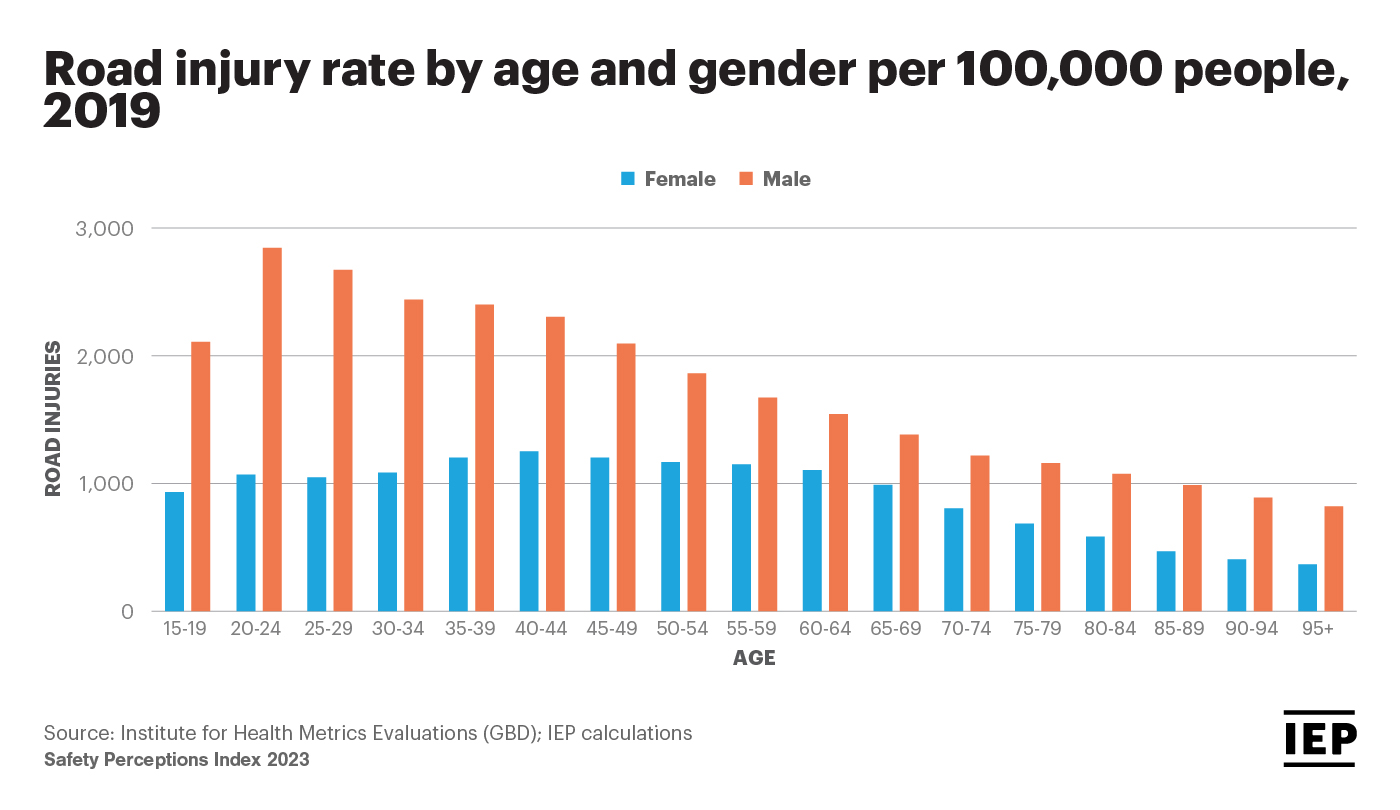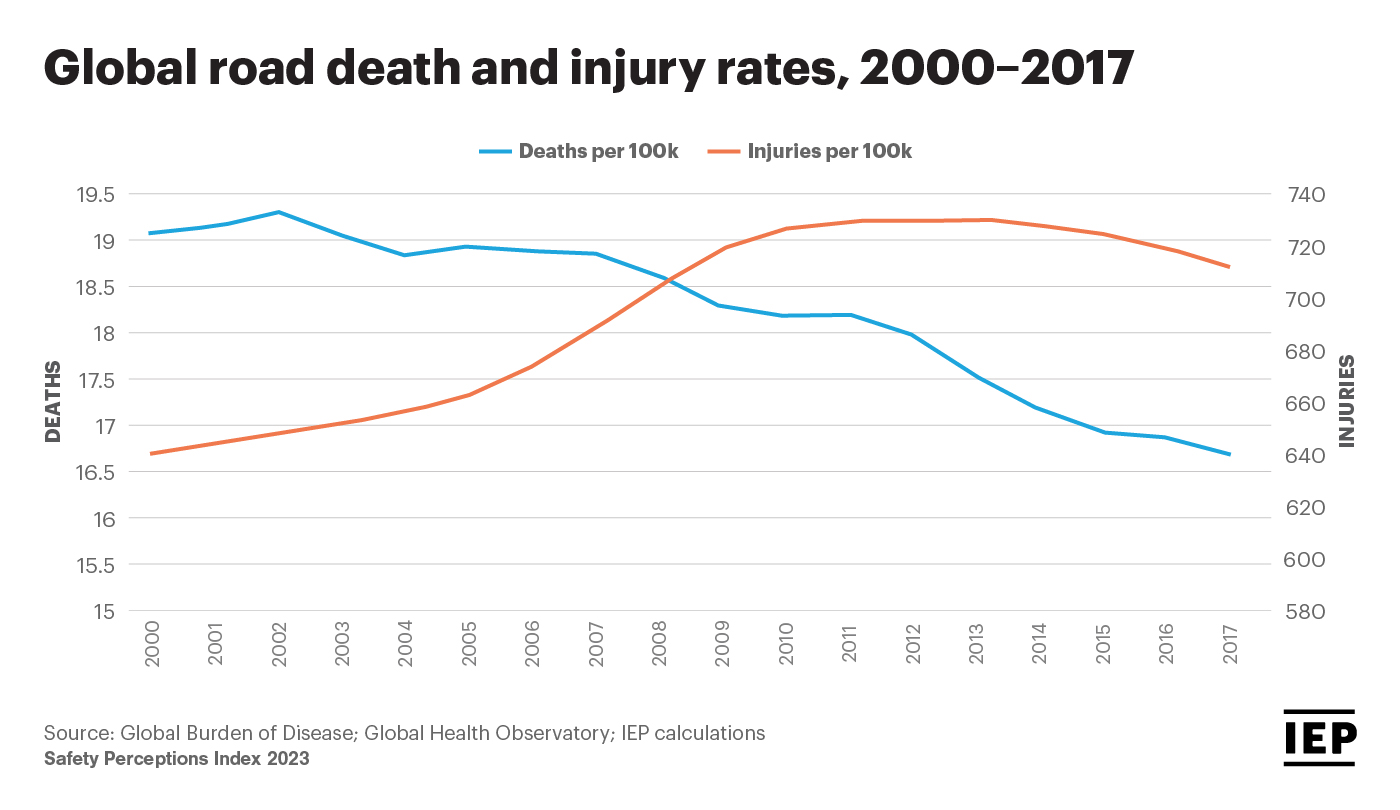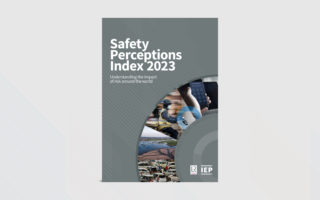Produced by the Institute for Economics and Peace (IEP), the Lloyd’s Register Foundation’s latest Safety Perception Index (SPI) records how perceptions of safety differ across countries, and what risks are most prominent in different regions of the world.
The findings of this year’s SPI highlights changes in road safety from 2019-2021. In both 2019 and 2021 road related accidents was identified as the most commonly cited threat to safety in people’s daily lives, dropping by five per cent in 2021 from 17.9% to 12.9%. In this report, we identified the communities and demographics most vulnerable to road accidents, and explored how the COVID-19 pandemic affected driving behaviors.
At the regional level, Sub-Saharan Africa experiences the most harm and worry about road accidents out of all regions. Of the entire region, 49.5% reports experiencing road harm, with half of all the countries in the region reporting experience of harm at 50% or higher. Similarly, 64.4% of the region reports worrying about road harm, and all 22 countries in the region report levels of worry higher than 50%. For comparison, only three countries outside the region report experience of road harm over 50%, and only 18 countries outside the region report worrying about road harm over 50%.
At the country level, Mali is the most vulnerable to road harm. In Mali, 67.1% of respondents report experiencing road harm, and 83.8% of the country reports worrying about road harm. Poor road quality and associated deaths from road accidents are a source of national tension in Mali, and a common reason for protests and public demonstrations.

Countries with lower peace levels and lower income levels are also the most vulnerable to road harm. As peace levels decrease by country, experience and worry about road harm increase, as countries with less peace may lack the capacity to carry out road safety measures, such as road law enforcement, sound road infrastructure development, and timely post-crash care services.
Furthermore, as country income-level decreases, experience and worry about road harm increase. Road fatality rates are more than three times higher in low-income countries than high-income countries; low- and middle-income countries also report 90% of all reduced life expectancies due to injuries resulting from road harm.
Young males from ages 15-29 are the most vulnerable demographic when it comes to experiencing road harm. The highest level of harm reported out of all age groups is the 15-29 age group, with 38.7% of respondents reporting experience of road harm. Younger drivers are more likely to be inexperienced drivers and less likely to limit when and where they drive based off hazardous driving conditions. Social pressure, in particular, heavily influences the decisions young teen drivers make, such as drinking, speeding, and running red lights. Furthermore, 35.15% of men report experiencing road harm, compared to 30.7% of women. Men are also reported to have higher annual road fatality rates compared to women, as well as being more likely to engage in dangerous driving behavior, such as overtaking other vehicles, driving in the dark, and speeding.

Lockdown patterns and stay-at-home orders across the world decreased people’s mobility as well as their use of roadways, reducing the amount of traffic volume on roads. In total, with less cars on the road, there were fewer recorded road fatalities from 2019-2021. Furthermore, in relative terms, adjusted for the number of cars on the road, road fatalities still decreased. While data collection has not been completed globally, data from 36 OECD countries shows that, on average, road fatalities declined by 9.9 per cent. According to Lloyd’s World Risk Poll, 80 out of 118 countries ranked road safety lower as a risk in 2021, compared to 2019.
However, we found no significant correlation between the decrease in road fatalities and the overall changes in stay-at-home rates [r=-0.06]. While it was expected that road fatalities would see a sharper decline, there was no dramatic reduction in road fatalities; instead, the reduction in road fatalities was in-line with rates of previous years.
Driving behavior worsened during the pandemic with drivers exhibiting more aggression and inattentiveness on the road. When roads are emptier (due to decreases in road traffic), driver’s perceptions of driving change, as they view riskier behavior as relatively safer; as drivers perceive less risk of crashing into others when driving fast on empty roads, driving during the pandemic was associated with increases in average vehicle speeds. Alongside dangerous speeding and inattention to the road, drivers had more instances of harsh breaking during the pandemic.
Access to medical resources and relief services were also strained during the pandemic, as medical systems were overrun with COVID-19 cases, which may have impacted road fatality rates. Hospitals saw increased mortality rates for road accident trauma patients compared to pre-pandemic levels, which may have been caused by the delays for admissions for non-COVID-19 patients that occurred during the pandemic. Due to the sheer volume of COVID-19 patients, the inaccessibility to care for road trauma patients may have impacted their outcomes.
As a result, road safety improvements during the pandemic may have largely been offset by increases in the severity of traffic collisions and the lack of timely medical care.
Road safety has been steadily improving over the past few decades. As the world’s population increases, and the number of cars on the road increases, total road fatalities continue to decrease. Overall, road fatalities have decreased by 2.4 percentage points since 2000. In contrast to road fatalities, road injuries have been increasing over the past two decades, although in recent years, they show a downward trend.

We found that improvements in road fatalities have largely been due to global advancements in automobile quality, road quality, safety feature legislation (like seat-belts), and improved post-crash medical care. Furthermore, the relationship between deaths and injuries suggests that these improved road safety conditions are resulting in less severe and non-fatal car accidents, meaning that people are less likely to die from car accidents today than they were in the past.

This is an excerpt from the 2nd edition of the Safety Perceptions Index, which provides a comprehensive analysis on the impact of risk around the world.
Download